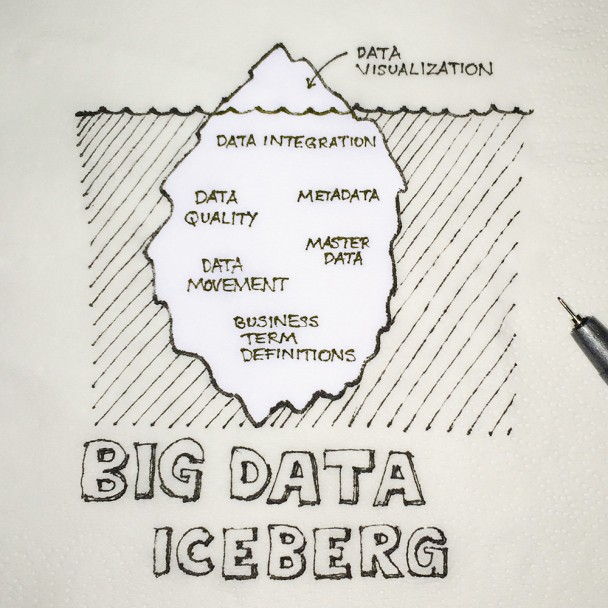
If there’s one area of analytics that people get really passionate about, it’s visualization. But as a new generation of people discover the joys of analytics, it’s worth remembering that pretty dashboards and charts are the easy part. The real challenge is getting data that’s worth viewing in the first place.
Eric Vallo of EV Technologies wrote a post that relates the napkin above to a real-world example:
“My customer is rearing and ready to go with their new BI tool. They want reports. They will report on ANYTHING they can. But fundamentally, we spent DAYS figuring out how to get the data in a report-worthy format from a report-unfriendly source. The customer didn’t anticipate the need for what we’ll call “good” data that actually works in a report.
Good data, being well-formed, organized, documented, and relatable. Yes yes, needs of the business, pretty report, ROI. I get it. But with the fire drill “inaugural” report out-of-the-way, it’s time to get to basics. We’re going to build a data strategy while these next fire drill reports come around later.
We’re going to tackle basic business terms (and standardize them). We’re going organize and integrate disparate app’s data into a single documented and relatable data source. Call it a data mart. Call it a warehouse. Call it big data. I don’t care. I want to create an experience that makes it easy to consume and share these analytics. This will involve some sort of strategy that involves all those nifty concepts in the big data iceberg, a well thought semantic layer strategy, and cool BI.”
The lesson that is endlessly relearned for every era of analytics from Executive Information Systems to Decision Support Systems to Business Intelligence to Analytics to Big Data: budget more time and money for the bottom of the iceberg than you would ever expect…

Comments
One response to “The Big Data Iceberg”
I feel like this article could also be titled “Garbage In, Garbage Out.” Without clear definitions and baseline reporting in place BEFORE you even begin collection and analyzing data, you are left with unstructured big data that may not make sense for your company’s goals. This is why building the back-end first and making sure that the data you will be looking at has the components you are looking for specifically.